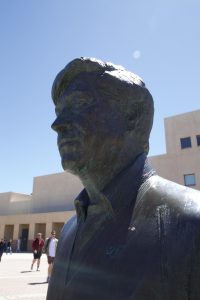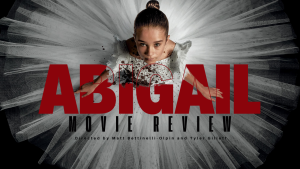Students discuss anti-Blackness in the Latinx community
May 14, 2021
The Latin@ Center and Black Students Center collaborated on “Anti-Blackness in the Latinx Community” on April 29, a Zoom conversation about colorism and racism in Hispanic culture.
According to the PowerPoint presented by staff from the Latin@ Center, anti-Blackness is defined as, “resistant or antagonistic against values and culture of Black people. This sometimes can be seen as racist or prejudiced acts.”
Anti-Blackness “is ingrained towards the Black community, which includes the Afro-Latinx and other intersectionalities, which can be Black LGBTQ+, multiethnic and multiracial,” said Isabel Torres, one of the staff members from the Latin@ Center.
One of the points that speakers of the event emphasized is that people of color can be racist towards others from outside or within their own race as well. Racism still exists and is prominent within Latinx culture, especially against those who are Afro-Latinx.
“Many people assume that non-Black people or of color cannot be racist just because of the racism that sometimes we have to suffer with, and that is not true. Being a person of color and racist is very common,” said Torres.
A lot of racism within the Latinx community stems from Spanish colonialism, which created a hierarchy in society based on how much or how little Spanish or white ancestry that people had. Staff from the Latin@ Center described the hierarchy from top to bottom.
At the top are “peninsulares,” which are Spaniards born in Spain. Second are “creoles,” those born in Mexico with Spanish parents. Third are “mestizos,” which consist of those born of a mix of Spanish and Mexican Indian parents. Then at the bottom of the pyramid were “mulattos,” which are those who are born of both Black and Mexican Indian heritage.
As the Latin@ Center staff said, while this is an old social ladder from previous centuries, it still affects the Latinx community today and fosters prejudice against both Afro-Latinx and those who have more of a Mexican Indian background.
“I feel like it’s still like that to the point where we can always go back to refer to this, because in society, there is still always somebody at the top,” said Torres.
This social ladder also promotes colorism, according to the staff from the Latin@ Center, because at the top of the pyramid are Europeans with white skin, and at the bottom are Afro-Latinx people, with dark skin.
Colorism is defined as discrimination based on skin color, placing preference on those with lighter skin tones. Those with more ethnic features are discriminated against and oppressed, according to the PowerPoint presented by the Latin@ Center.
In the beginning of the Zoom, a video from NBCLX about colorism within the Latinx community in Puerto Rico was shown. In the video, Afro-Latinx people at a Black Lives Matter protest speak out about the discrimination that they face on a daily basis because of their appearance, specifically about the color of their skin and the texture of their hair.
“Colorism and the way your hair is has a big factor into why there is discrimination within the Latinx community. And these are factors that can’t be changed. So, it’s really interesting to see how even Latinos are racist within our own community,” said Lupe Rosas, one of the staff members from the Latin@ Center.
With the prominence of the Black Lives Matter Movement, Afro-Latinx people are beginning to speak more about the racism that they’ve faced within their own community.
“I think it’s a topic that definitely needs to be addressed, especially considering the Black Lives Matter Movement. How bold a lot of my community, the Latinx community, has been as far as their anti-Blackness,” said Xochitl Sanders Ramirez, a member of both the Latin@ Center and Black Student Center.
“Racism isn’t stopping and it’s just heartbreaking for these people dying just because of the color of their skin,” said Rosas.
In terms of social media activism regarding BLM and the Afro-Latinx community, Dre Biddle, one of the staff members from the Black Student Center, discussed how people shouldn’t just blindly share posts and articles about these movements without educating themselves first.
“I definitely think that your activism should go further than that, though. That shouldn’t be the end to your activism, hitting share on your stories shouldn’t be the end of your activism. You should read a few articles about what happened, don’t just see the headline and post it. Learn about what happened, try to prevent [whatever event occurred],” said Biddle.
According to Biddle, one of the most important things that people can do is to “educate yourself on social issues occurring within those communities.”
Lastly, staff from both the Latin@ Center and Black Student Center discussed the importance of racial healing within both the Latinx and Black community.
“I feel like there’s a lot of healing that has to be done with our community. It’s very hard to do that on a large scale, going out into the world and doing that racial healing among two large communities,” said Biddle.
“I just hope that future generations don’t grow up with that, because we should know better … there shouldn’t be any problems just because of your [skin] color or hair,” concluded Torres.





